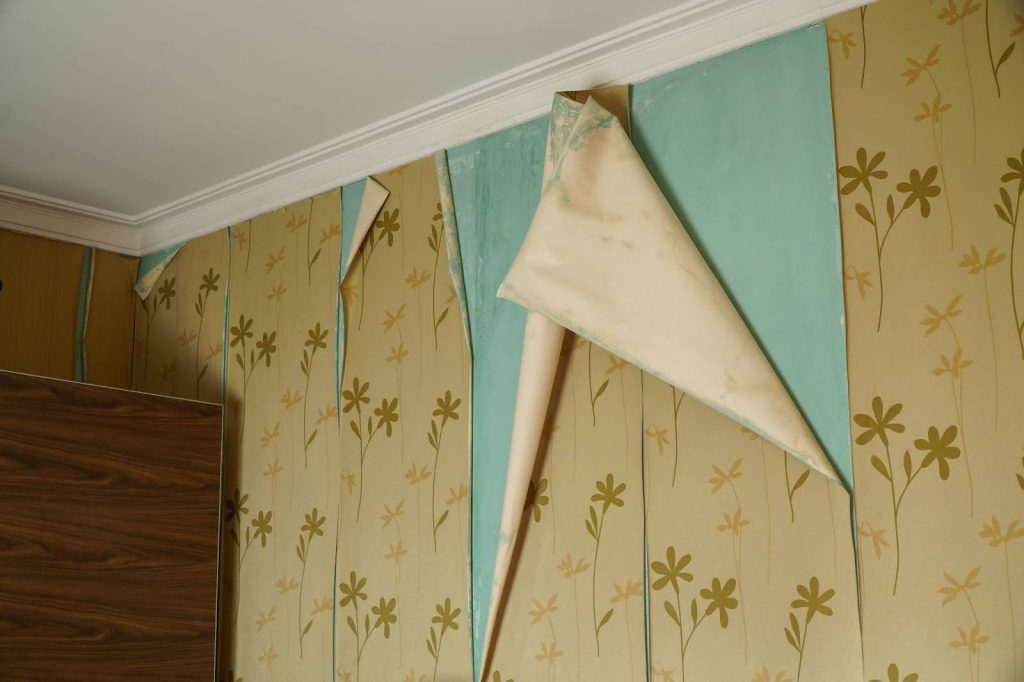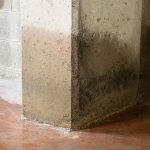How To Spot Water Damage in a House: 8 Things To Look For
Water damage in a house comes from various sources, such as plumbing leaks, flooding, or even humidity. It’s a problem that often starts unnoticed but quickly escalates, causing significant damage to your home’s structure and potentially leading to health hazards like mold growth.
Water damage is not always immediately apparent. It may lurk behind walls, under floors, or in other hidden areas of your home, silently causing harm. By the time water damage becomes visible, it may have already caused substantial harm.
Early detection and prompt water damage repair mitigate the impact of water damage.
What is water damage?
Water damage in a house occurs when water intrudes into areas where it shouldn’t be. This intrusion leads to various destructive processes like wood rot, mold growth, rusting steel, and delaminating materials.
This damage manifests in several ways, depending on the source and extent of the water exposure. Water damage can affect almost every component of a home.
Ignoring the signs of water damage has serious consequences. Apart from structural damage, there are health risks associated with mold and mildew, which thrive in damp environments. Additionally, ongoing water issues decrease your home’s value and appeal. In extreme cases, water damage compromises your home’s structural integrity
Common causes of water damage
Water damage in homes can originate from numerous sources, each with its unique challenges and solutions. Understanding these common sources of water damage is crucial for homeowners to take proactive measures in prevention and early detection.
Leaks
One of the most common culprits is leaks, which most commonly occur in roofs, pipes, and appliances.
Roof leaks are usually from damaged shingles or improper sealing. These leaks allow water to seep into attics and ceilings.
Plumbing leaks, whether from burst pipes, faulty connections, or deteriorating fixtures, cause damage inside walls and under floors.
Appliances like washing machines, dishwashers, and water heaters are also frequent sources of leaks, especially if they are older or poorly maintained.
Flooding
Flooding is another major cause of water damage, particularly in areas prone to heavy rains, hurricanes, or overflowing rivers. Basements and ground-level areas are most at risk, where water can quickly accumulate and cause extensive damage.
Humidity
Humidity, too, plays a role in water damage. Excessive moisture in the air, often due to poor ventilation or inadequate dehumidification, sometimes leads to condensation on walls and ceilings, promoting mold growth and damaging building materials over time.

Sign #1: Discoloration and stains
One of the earliest and most noticeable signs of water damage in a house is the appearance of discoloration and stains on walls, ceilings, and floors. These marks often manifest as yellow, brown, or gray patches, indicating prolonged exposure to moisture.
On walls and ceilings, look for areas where the paint or wallpaper appears darker than the surrounding material.
On floors, especially carpeted or wooden ones, be alert for spots that are darker or feel damp to the touch. These discolorations and stains are telltale signs that water has seeped into and damaged the material.
Sign #2: Warped or buckling floors
Warped or buckling floors are another clear indicator of water damage in a house. This type of damage occurs when excessive moisture is absorbed by flooring materials, causing them to expand and distort.
This often results in planks that curl up at the edges or corners of hardwood floors, creating an uneven surface. With laminate flooring, excessive moisture causes the layers to separate and swell. You might even notice the floor lifting up from its subfloor in severe cases.
This warping and buckling not only affect the appearance and functionality of your floors but also signal deeper water damage that could be affecting the subfloor and structural elements beneath.
Sign #3: Musty odors
A musty odor in your home is a subtle but significant sign indicating water damage or mold. This distinct smell is typically caused by the growth of mold and mildew, which thrive in damp, poorly ventilated areas. It’s particularly common in basements, bathrooms, and other spaces where moisture levels are high.
The odor might be more noticeable during humid weather or in closed-up rooms. If you detect a persistent musty smell, it’s a strong indication that water has infiltrated an area of your home, creating an ideal environment for mold growth.
Sign #4: Mold and mildew growth
The presence of mold and mildew in your home is a clear, alarming sign of water damage. These fungi thrive in moist environments, and their growth indicates that an area has been exposed to water for an extended period.
Mold appears in various colors, including black, green, or white, and it often forms patchy, fuzzy spots on walls, ceilings, or floors. Mildew, typically seen as a gray or white powdery substance, is commonly found in bathrooms, kitchens, and other damp areas.
Mold and mildew signify water damage and pose serious health risks, particularly for individuals with allergies or respiratory issues. Prompt action to remove mold and address the underlying moisture problem is essential for maintaining a healthy living environment.
Sign #5: Peeling paint or wallpaper
Peeling paint or wallpaper is a common and visible sign of water damage in a house. When walls are exposed to moisture over time, it compromises the adhesive bond that keeps paint and wallpaper attached to the surface. As a result, you may notice paint starting to bubble, blister, or flake off, while wallpaper may begin to curl at the edges or come loose.
These symptoms often occur where water damage is not immediately apparent, like near a leaky pipe within a wall.

Sign #6: Swollen wood or drywall
Swollen wood or drywall is a serious indicator of water damage within a house. When these materials come into prolonged contact with moisture, they absorb water and swell.
In the case of wooden structures like door frames, window sills, or floorboards, you may notice warping or distortion. Water-damaged drywall becomes soft, bulges or crumbs, and loses its structural integrity.
This swelling affects the appearance and functionality of these elements and points to potential hidden water damage.
Sign #7: Rust and corrosion
Rust and corrosion on metal fixtures in your home is a telltale sign of prolonged exposure to water and moisture.
Rust and corrosion are most common in areas where metal is consistently in contact with water, such as in bathrooms, kitchens, and basements. You might notice rust forming on fixtures like faucets, showerheads, and pipes, or on metal fasteners and supports within the structure.
Rust is not only a surface issue; it indicates that the metal has been undergoing a chemical reaction due to moisture, leading to its gradual degradation. This weakening of metal components has severe implications for your home’s structural integrity and safety, especially if these components play a supportive role.
Sign #8: Increased utility bills
An unexpected increase in your water bills is a subtle yet significant indicator of hidden leaks and water damage in your home. This sign is often overlooked, as it doesn’t present a visible problem. However, if you notice a sudden spike in your water usage without a corresponding increase in your daily activities, it could mean that water is escaping through a leak you haven’t yet detected.
These leaks can be anywhere and cause damage over time. Monitoring your water bills for unusual changes is a proactive way to catch such hidden leaks early.
Conducting a thorough inspection
To prevent water damage, inspect your home for signs of it.
Start by examining areas where water damage is most likely to occur, such as bathrooms, kitchens, basements, and attics. Don’t forget to inspect under sinks, around appliances, and in other hidden areas where leaks may go unnoticed.
Look for any visible signs like stains, mold, or peeling paint. Feel for dampness or swelling in walls and floors, and be alert to musty odors.
Regularly check your roof for missing or damaged shingles and ensure gutters and downspouts are clear and functioning properly.
Inspect your plumbing system for any signs of leaks or corrosion.
Remember, early detection is key to preventing extensive damage, so make these inspections a routine part of your home maintenance schedule.
When to seek professional help
If you encounter extensive water damage — such as large areas of mold growth, significant structural issues like sagging floors or ceilings, or widespread water stains — it’s time to call in the experts. Professionals are also essential when dealing with water damage resulting from contaminated sources, such as sewage backups.
Additionally, if you’re unable to identify the source of the water damage or if the repairs are beyond your skill level, professional intervention is necessary.
Experts in water damage repair can provide a comprehensive assessment, identify all affected areas, and ensure that repairs are conducted safely and effectively.
Get insurance help when your home has water damage with Hudson Douglas Public Adjusters
Promptly addressing signs of water damage in your home is essential to prevent further damage and avoid costly water damage repair.
At Hudson Douglas Public Adjusters, we understand the challenges homeowners face when dealing with water damage and insurance claims. Our team is dedicated to helping you navigate the complexities of insurance policies to ensure you receive the coverage you deserve when your home is damaged.
If you’re facing water damage in your home, don’t hesitate to contact Hudson Douglas Public Adjusters. We’re here to provide expert guidance and support to help you get the most out of your insurance coverage so you can restore your home.



